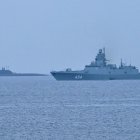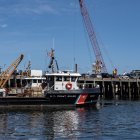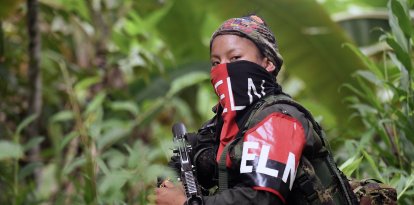Report reveals political violence and terrorism that sustain the Cuban dictatorship
The Castro regime has never issued an apology, has consistently shielded those responsible, and has actively worked to gain international legitimacy for its terrorist actions, according to the report "The Multiple Faces of Terrorism in Cuba."

Palestinian men hold posters of Fidel Castro during a rally in Gaza City in 2016.
A recent report by the Center for Studies, Training and Social Analysis (CEU-CEFAS) revealed that the Cuban dictatorship has employed political violence and terrorism since its inception. According to the document, the intensity and forms of this terror have evolved over time, becoming part of more complex strategies both within Cuba and throughout the surrounding Caribbean region.
Authored by Matías Jove, executive director of the Spanish association Cuba in Transition, and John Suarez, executive director of the Center for a Free Cuba, the report systematizes the methods and terrorist actions employed by the Castro regime—even prior to its official establishment in 1959—and details how these tactics have gradually been exported worldwide.
According to "The Many Faces of Terrorism in Cuba," the regime has never sought forgiveness, has consistently shielded its perpetrators, and has actively worked to gain international legitimacy for its acts of terrorism and political violence.
An anti-democratic regime of more than 60 years
"Castroism in Cuba resorted to terror and violence to establish its dictatorship in 1959 and has continued to have connections with criminal or violent acts to maintain its anti-democratic regime for more than 60 years," states the 44-page report, published across various digital platforms.
The report states that Fidel Castro has been connected to political violence since his youth, with contemporary press reports linking him to at least three assassinations—though he was never convicted due to insufficient evidence.
Terrorism as the main weapon to come to power
Domingo René García Collado, head of Action and Sabotage for the 26th of July Movement, acknowledged that “this Revolution was made on the basis of terrorism.” One example occurred on November 8, 1957, when at least one hundred explosive devices detonated simultaneously across the Cuban capital.
After the Revolution’s victory in 1959, guerrilla warfare in the Sierra Maestra intensified, and kidnappings—including several airplane hijackings—were carried out to bolster the Revolutionary Air Forces. Notably, on October 21, 1958, Cuba experienced its first-ever air hijacking.
Following the Revolution’s success on January 1, 1959, Fidel Castro expanded his international agenda to export his “method” throughout Latin America by establishing the Directorate of National Liberation. Under his regime, Cuba sponsored street terrorism in Venezuela, guerrilla landings in Panama and the Dominican Republic, and supplied arms to the Algerian National Liberation Front.
In November 1962, the U.S. expelled two Cuban diplomats, Elsa Montera Maldonado and José Gómez Abad, who were reportedly planning a terrorist attack involving 500 kilograms of explosives targeting multiple locations across the country, including New York’s Grand Central Terminal.
In 1966, Fidel Castro brought together over 500 leaders from Africa, Asia, and the Americas at the First Tricontinental Conference, where he publicly declared that “weapons were the way to achieve power.”
The role of terrorism during Cuba’s Sovietization period
The CEU-CEFAS report examines how the alliance with the Soviet Union bolstered the military apparatus the regime used to export its terrorist tactics.
The Cuban army became the ninth most powerful military force in the world, deploying as many as 70,000 troops in Africa alone. Cuba provided military aid to countries including Algeria, Iraq, Libya, Syria, Grenada, and Nicaragua. Cuban military personnel also fought under the Syrian flag during the Yom Kippur War. During this period, the regime strengthened its collaboration with Palestinian terrorist organizations, notably supporting the Al-Fatah movement.
In 1975, the French government expelled three Cuban diplomats for their collaboration with Carlos the Jackal, one of the world’s most wanted terrorists at the time. The report also alleges that dozens of ETA members found refuge in Cuba during the 1980s.
Castroism linked to drug trafficking
After the fall of the Berlin Wall, Cuba not only maintained its ties with terrorist groups but also developed connections with drug trafficking, as detailed in a 1989 declassified CIA report.
In 1982, four high-ranking Cuban military officers connected to the Colombian M-19 were indicted by the U.S. Attorney for the Southern District of Florida. Additionally, Fidel Castro himself appeared as a mediator with the Medellín Cartel in a separate U.S. trial involving Panamanian General Manuel Noriega.
Rise of transnational criminal networks instructed by Cuba
As of 2025, Cuba continues to maintain certain links with terrorist organizations like Hamas and Hezbollah, both of which are listed as terrorist groups by the European Union.
The regime maintains a strong presence in Lebanon, where the head of Hezbollah’s international relations visited the Cuban embassy during protests by Cubans against Miguel Díaz-Canel’s government in 2021.
In 2019, the Cuban ambassador to Lebanon, Alexander Pellicer Moraga, met with the Hamas representative in the country. In 2023, Cuba’s ambassador to Lebanon, Jorge Leon Cruz, received a high-level delegation from the Palestinian Islamic Resistance Movement, Hamas.
In recent years, dozens of official pro-Palestinian events have been held, led by senior regime figures, including the president and several generals.
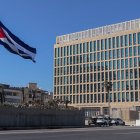
Politics
Rubio states that Cuba did not cooperate with the US in the fight against terrorism last year
Diane Hernández
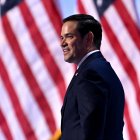
Politics
Marco Rubio wants to "hold the Cuban regime accountable" for the US fugitives it harbors
Diane Hernández
Terrorism: from a weapon of war to a communist expansion
Terrorism in Cuba began as a weapon of war to seize power but later evolved into a political tool that helped the regime expand its communist network globally. Fidel Castro aimed to export the Revolution, its methods, and its agenda worldwide. After the dissolution of the USSR, Cuba positioned itself as the bastion of Marxism–Leninism in resistance, concludes the report by the Center for Studies.





